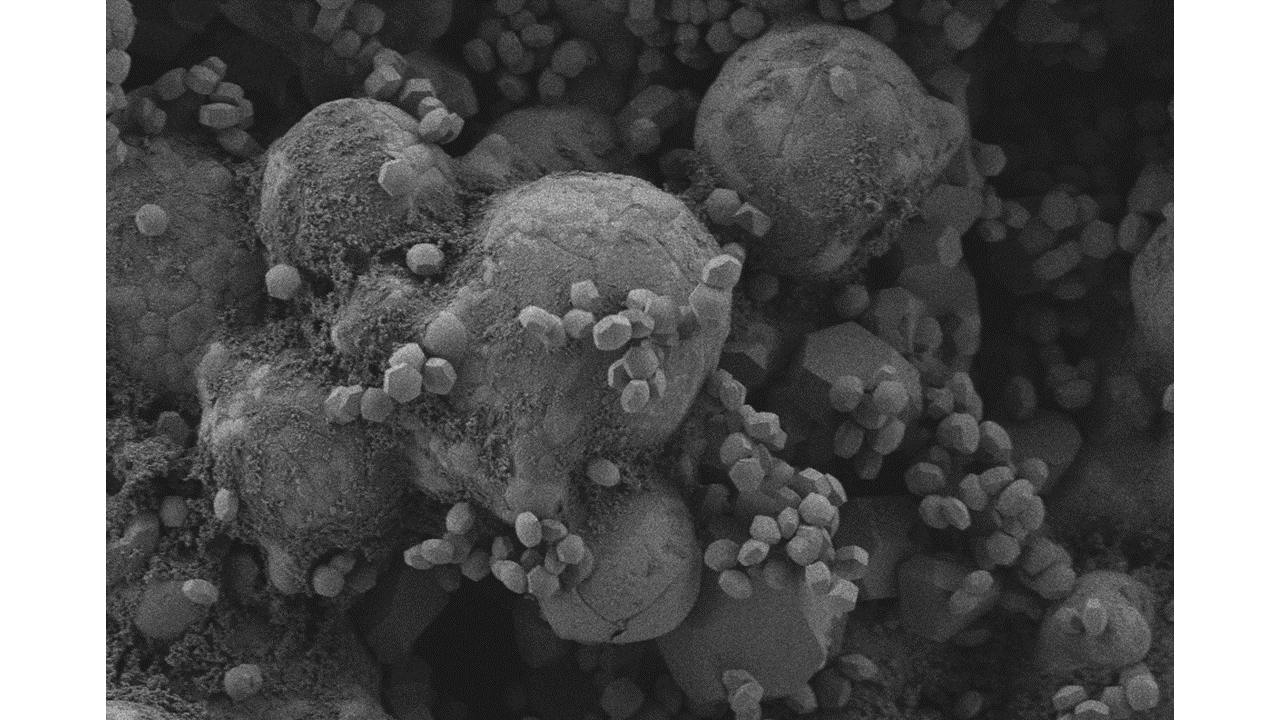
Wastewater containing persistent organic contaminants—such as phenolic compounds, polycyclic aromatic hydrocarbons, dyes, and pharmaceutical residues—poses significant environmental and public health hazards, even when the compounds meet REACH compliance in pure form. Conventional municipal wastewater treatment relies heavily on energy-intensive biological and chemical processes, resulting in high CO₂ emissions and substantial operational costs. This thesis investigates a novel, daylight-driven photocatalytic approach for wastewater remediation aimed at drastically reducing the energy footprint of water treatment. The method utilizes translucent or semi-translucent metal foams with defined porosity and high specific surface area, coated with lanthanide-based upconversion microcrystals (UCMCs). These coatings convert low-energy daylight photons into high-energy UV photons, generating hydroxyl radicals capable of degrading organic pollutants with >95% efficiency. The research will explore coating synthesis, foam substrate optimization, and reactor design for continuous-flow operation. Laboratory testing will assess photocatalytic degradation rates, coating durability under long-term UV exposure, and the potential for scaling toward industrial wastewater treatment. The expected outcome is a sustainable platform technology capable of reducing the CO₂ equivalent of water purification by up to 90% compared to conventional techniques.
Scope of the tailorable Work
1- Literature review on photocatalysis, lanthanide-based upconversion materials, and porous metal foam substrates.
2- Fabrication and characterization of metal foams with controlled porosity and optical transmission.
3- Synthesis and surface modification of lanthanide-based upconversion microcrystals with high specific surface area (~1000 m²/g).
4- Deposition and adhesion optimization of UCMC coatings on metal foam substrates.
5- Reactor design for daylight-driven photocatalytic treatment of organic wastewater.
6- Laboratory-scale testing for degradation efficiency of representative contaminants (phenols, PAHs, dyes, antibiotics).
7- Evaluation of coating durability and photocatalytic stability under continuous operation.
8- Measurement of energy savings and CO₂ reduction potential compared to benchmark wastewater treatment processes.
9- Analysis of scalability, cost-effectiveness, and environmental impact.
10- Documentation of results for potential industrial upscaling and further process development.
We offer you a versatile and interesting challenge in an international working environment and integration in our projects:
- Insight into the processes of scientific documentation and data management
- Collaboration within a friendly and supportive team
- Flexible working
The scope of the topic can be adapted to fit the available time frame and requirements, whether for a Master’s or Diploma thesis, project work, lab rotation, or similar formats.





Wastewater containing persistent organic contaminants—such as phenolic compounds, polycyclic aromatic hydrocarbons, dyes, and pharmaceutical residues—poses significant environmental and public health hazards, even when the compounds meet REACH compliance in pure form. Conventional municipal wastewater treatment relies heavily on energy-intensive biological and chemical processes, resulting in high CO₂ emissions and substantial operational costs. This thesis investigates a novel, daylight-driven photocatalytic approach for wastewater remediation aimed at drastically reducing the energy footprint of water treatment. The method utilizes translucent or semi-translucent metal foams with defined porosity and high specific surface area, coated with lanthanide-based upconversion microcrystals (UCMCs). These coatings convert low-energy daylight photons into high-energy UV photons, generating hydroxyl radicals capable of degrading organic pollutants with >95% efficiency. The research will explore coating synthesis, foam substrate optimization, and reactor design for continuous-flow operation. Laboratory testing will assess photocatalytic degradation rates, coating durability under long-term UV exposure, and the potential for scaling toward industrial wastewater treatment. The expected outcome is a sustainable platform technology capable of reducing the CO₂ equivalent of water purification by up to 90% compared to conventional techniques.
Scope of the tailorable Work
1- Literature review on photocatalysis, lanthanide-based upconversion materials, and porous metal foam substrates.
2- Fabrication and characterization of metal foams with controlled porosity and optical transmission.
3- Synthesis and surface modification of lanthanide-based upconversion microcrystals with high specific surface area (~1000 m²/g).
4- Deposition and adhesion optimization of UCMC coatings on metal foam substrates.
5- Reactor design for daylight-driven photocatalytic treatment of organic wastewater.
6- Laboratory-scale testing for degradation efficiency of representative contaminants (phenols, PAHs, dyes, antibiotics).
7- Evaluation of coating durability and photocatalytic stability under continuous operation.
8- Measurement of energy savings and CO₂ reduction potential compared to benchmark wastewater treatment processes.
9- Analysis of scalability, cost-effectiveness, and environmental impact.
10- Documentation of results for potential industrial upscaling and further process development.
We offer you a versatile and interesting challenge in an international working environment and integration in our projects:
- Insight into the processes of scientific documentation and data management
- Collaboration within a friendly and supportive team
- Flexible working
The scope of the topic can be adapted to fit the available time frame and requirements, whether for a Master’s or Diploma thesis, project work, lab rotation, or similar formats.



